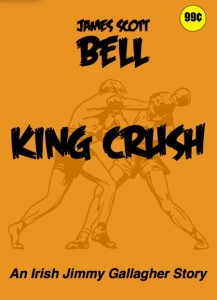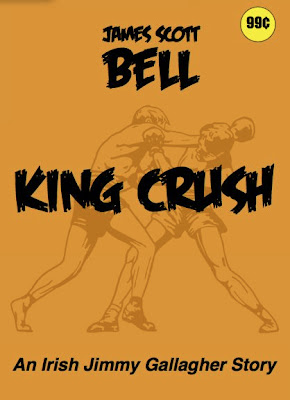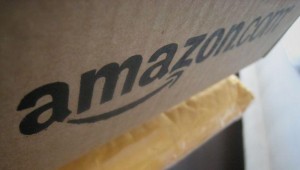Monthly Archives: February 2012
Going Deeper With a Series Character
Teach Your Children
Teach Your Children
The Pain of Rejection
The Pain of Rejection
Oh, Sweet Irony
I suppose it was inevitable once Amazon started their own publishing wing. A company that was founded on the premise that you need never set foot in a bookstore again (which expanded to never setting foot in any store, for many) has started opening…wait for it…stores. They’re sussing out their first bricks & mortar location in Seattle, where their corporate headquarters is located.
Mind you, this won’t really be a bookstore; apparently the focus will be on pricier items such as tablet computers (and, I’m guessing, their rapidly expanding Kindle line).
It’s an astonishing reversal for the company that insures there’s a UPS driver coming down my street every day, sometimes even multiple times a day.
Mind you, I don’t intend to launch a bout of Amazon bashing here–I’m as guilty as my neighbors when it comes to online ordering. I signed up to have kitty litter, toilet paper, and coconut water shipped to my door every month once I realized that it was cheaper than buying those items in the supermarket. I did the vast majority of my Christmas shopping online this year, a significant chunk of it while getting my hair cut, which is a far cry from past Decembers when I drove from store to store trying to cross everyone off my list. And most importantly for me as a writer, thanks to Amazon I consistently sell backlist copies of books that vanished from store shelves years ago.
So I’m definitely no Amazon hater. And once Barnes & Noble, Books a Million, and other stores issued statements declaring that they would (understandably) refuse to stock titles from Amazon’s new publishing imprint, launching their own physical retail wing made sense.
Still, it is ironic, isn’t it? When companies like Amazon first arrived on the scene in the heady days of the dotcom boom, they loftily promised that within a decade, no one would have to leave their house for anything (fantastic news for agoraphobes; maybe not so great for the rest of us). Websites would sell everything from beds to orange juice to mouthwash and deliver it to your front door, all for less than you’d pay in a store since the overhead of rent, utilities, and payroll would be largely removed from the equation.
And lo and behold, here we are a little more than a decade later, and they were largely right. Except that there no longer are a slew of websites providing the online equivalent of roaming from store to store: instead it’s a one-stop shopping experience. Amazon has become a behemoth, the place where you can buy pretty much anything you desire and have it delivered to your front door, usually within two days. And now, after driving so many mom and pop stores out of existence, they’re backtracking and opening a place where you can get the personal touch; one-on-one interaction with a sales staff.
I have very mixed feelings about all of this. For one thing, the tech boom has spawned a modern day equivalent of the types of monopolies that held the nation at their mercy around the turn of the last century, with Amazon and Microsoft replacing Standard Oil and U.S. Steel. In some regards, aren’t Jeff Bezos and Mark Zuckerberg contemporary robber barons?
And now that so many stores that I loved have shuttered, it seems unseemly that the company that helped drive them out of existence is stepping in and taking over the shelf space they helped destroy. (For the record, I buy all of my physical books in bookstores, and I still buy as many as I did before I got my Kindle. I’ve actually found that having an eReader has increased my weekly book consumption).
But I’m also guilty of getting those deliveries every month, of using them to make my holiday shopping easier; and I’ve received the gains in sales that wouldn’t have been possible if my books were only available in print. And I have many friends whose contracts weren’t renewed, but managed to continue publishing their books independently thanks to Amazon, an outlet that wouldn’t have been available to them otherwise.
So I’m curious; what do you all think about Amazon’s latest move?
Oh, Sweet Irony
I suppose it was inevitable once Amazon started their own publishing wing. A company that was founded on the premise that you need never set foot in a bookstore again (which expanded to never setting foot in any store, for many) has started opening…wait for it…stores. They’re sussing out their first bricks & mortar location in Seattle, where their corporate headquarters is located.
Mind you, this won’t really be a bookstore; apparently the focus will be on pricier items such as tablet computers (and, I’m guessing, their rapidly expanding Kindle line).
It’s an astonishing reversal for the company that insures there’s a UPS driver coming down my street every day, sometimes even multiple times a day.
Mind you, I don’t intend to launch a bout of Amazon bashing here–I’m as guilty as my neighbors when it comes to online ordering. I signed up to have kitty litter, toilet paper, and coconut water shipped to my door every month once I realized that it was cheaper than buying those items in the supermarket. I did the vast majority of my Christmas shopping online this year, a significant chunk of it while getting my hair cut, which is a far cry from past Decembers when I drove from store to store trying to cross everyone off my list. And most importantly for me as a writer, thanks to Amazon I consistently sell backlist copies of books that vanished from store shelves years ago.
So I’m definitely no Amazon hater. And once Barnes & Noble, Books a Million, and other stores issued statements declaring that they would (understandably) refuse to stock titles from Amazon’s new publishing imprint, launching their own physical retail wing made sense.
Still, it is ironic, isn’t it? When companies like Amazon first arrived on the scene in the heady days of the dotcom boom, they loftily promised that within a decade, no one would have to leave their house for anything (fantastic news for agoraphobes; maybe not so great for the rest of us). Websites would sell everything from beds to orange juice to mouthwash and deliver it to your front door, all for less than you’d pay in a store since the overhead of rent, utilities, and payroll would be largely removed from the equation.
And lo and behold, here we are a little more than a decade later, and they were largely right. Except that there no longer are a slew of websites providing the online equivalent of roaming from store to store: instead it’s a one-stop shopping experience. Amazon has become a behemoth, the place where you can buy pretty much anything you desire and have it delivered to your front door, usually within two days. And now, after driving so many mom and pop stores out of existence, they’re backtracking and opening a place where you can get the personal touch; one-on-one interaction with a sales staff.
I have very mixed feelings about all of this. For one thing, the tech boom has spawned a modern day equivalent of the types of monopolies that held the nation at their mercy around the turn of the last century, with Amazon and Microsoft replacing Standard Oil and U.S. Steel. In some regards, aren’t Jeff Bezos and Mark Zuckerberg contemporary robber barons?
And now that so many stores that I loved have shuttered, it seems unseemly that the company that helped drive them out of existence is stepping in and taking over the shelf space they helped destroy. (For the record, I buy all of my physical books in bookstores, and I still buy as many as I did before I got my Kindle. I’ve actually found that having an eReader has increased my weekly book consumption).
But I’m also guilty of getting those deliveries every month, of using them to make my holiday shopping easier; and I’ve received the gains in sales that wouldn’t have been possible if my books were only available in print. And I have many friends whose contracts weren’t renewed, but managed to continue publishing their books independently thanks to Amazon, an outlet that wouldn’t have been available to them otherwise.
So I’m curious; what do you all think about Amazon’s latest move?
Here’s another promotional tool that will drive you crazy. I just learned about Pinterest, where you pin up pictures online that relate to your book, your characters, the locations in your story, your vacation in New Guinea, your restaurant meals, or your life in general. This acts as an online pinboard that other folks can view. If someone spots a photo on my board they like, they can share it. You tell what the picture means and people comment on it. At least, this is my understanding so far.
But who owns the rights to the photos you post? What happens, for example, if I imagine a character looking like Richard Dean Anderson in Stargate: SG1? Can I just copy his photo off the Web? According to one person I asked, yes I can, if Pinterest attributes the source. In some cases, though, I’ve cut out photos from magazines of celebrities or people on society pages and scanned them into my computer because they look like my characters. Can I use these photos? I doubt it, because I don’t have the people’s permission. It seems safer to provide your own pictures.
This promises to be another time consuming promotional activity. I’d have to learn how to use the site, determine a theme for each board, and upload the photos. Do we really need more work to do? Or is this a great promotional opportunity we might be missing if we let it go? There’s always the pressure to jump on the next cart that wheels along. But hop on too many wagons, and you might fall off.
Oh, and you have to request an invitation to join this site. Then you register using your Facebook or Twitter account. This is what the site says:
How Pinterest Works
After you have created an Account (defined below) to become a Member of Pinterest, you may use the Services to create, view and follow visual collections. In order to create a visual collection, you may (i) upload images from your computer by selecting the “Add a Pin” section of the Site, (ii) use the Application to take and upload images, or (iii) install and use our “Pin It” browser toolbar to upload images, by following the instructions provided on the “About” section of the Site. Please note that your visual collections will be publicly viewable by all visitors to the Site and Application. In order to follow the visual collections of other Members, you may search for other visual collections via the Site and Application and select the option to “Follow” such Members. http://pinterest.com
Here are some tips, kindly shared by another author on one of my listserves:
http://www.authormedia.com/2012/02/01/3-ways-authors-can-use-pinterest-guilt-free/
http://www.authormedia.com/2012/02/02/set-up-your-author-pinterest-profile-in-10-easy-steps/
http://www.authorems.com/2012/pinterest/
http://savvybookwriters.wordpress.com/2012/01/29/how-can-pinterest-increase-your-book-sales/
So do any of you already participate in Pinterest? Or would you do it now that you’re aware of this site?
Here’s another promotional tool that will drive you crazy. I just learned about Pinterest, where you pin up pictures online that relate to your book, your characters, the locations in your story, your vacation in New Guinea, your restaurant meals, or your life in general. This acts as an online pinboard that other folks can view. If someone spots a photo on my board they like, they can share it. You tell what the picture means and people comment on it. At least, this is my understanding so far.
But who owns the rights to the photos you post? What happens, for example, if I imagine a character looking like Richard Dean Anderson in Stargate: SG1? Can I just copy his photo off the Web? According to one person I asked, yes I can, if Pinterest attributes the source. In some cases, though, I’ve cut out photos from magazines of celebrities or people on society pages and scanned them into my computer because they look like my characters. Can I use these photos? I doubt it, because I don’t have the people’s permission. It seems safer to provide your own pictures.
This promises to be another time consuming promotional activity. I’d have to learn how to use the site, determine a theme for each board, and upload the photos. Do we really need more work to do? Or is this a great promotional opportunity we might be missing if we let it go? There’s always the pressure to jump on the next cart that wheels along. But hop on too many wagons, and you might fall off.
Oh, and you have to request an invitation to join this site. Then you register using your Facebook or Twitter account. This is what the site says:
How Pinterest Works
After you have created an Account (defined below) to become a Member of Pinterest, you may use the Services to create, view and follow visual collections. In order to create a visual collection, you may (i) upload images from your computer by selecting the “Add a Pin” section of the Site, (ii) use the Application to take and upload images, or (iii) install and use our “Pin It” browser toolbar to upload images, by following the instructions provided on the “About” section of the Site. Please note that your visual collections will be publicly viewable by all visitors to the Site and Application. In order to follow the visual collections of other Members, you may search for other visual collections via the Site and Application and select the option to “Follow” such Members. http://pinterest.com
Here are some tips, kindly shared by another author on one of my listserves:
http://www.authormedia.com/2012/02/01/3-ways-authors-can-use-pinterest-guilt-free/
http://www.authormedia.com/2012/02/02/set-up-your-author-pinterest-profile-in-10-easy-steps/
http://www.authorems.com/2012/pinterest/
http://savvybookwriters.wordpress.com/2012/01/29/how-can-pinterest-increase-your-book-sales/
So do any of you already participate in Pinterest? Or would you do it now that you’re aware of this site?






